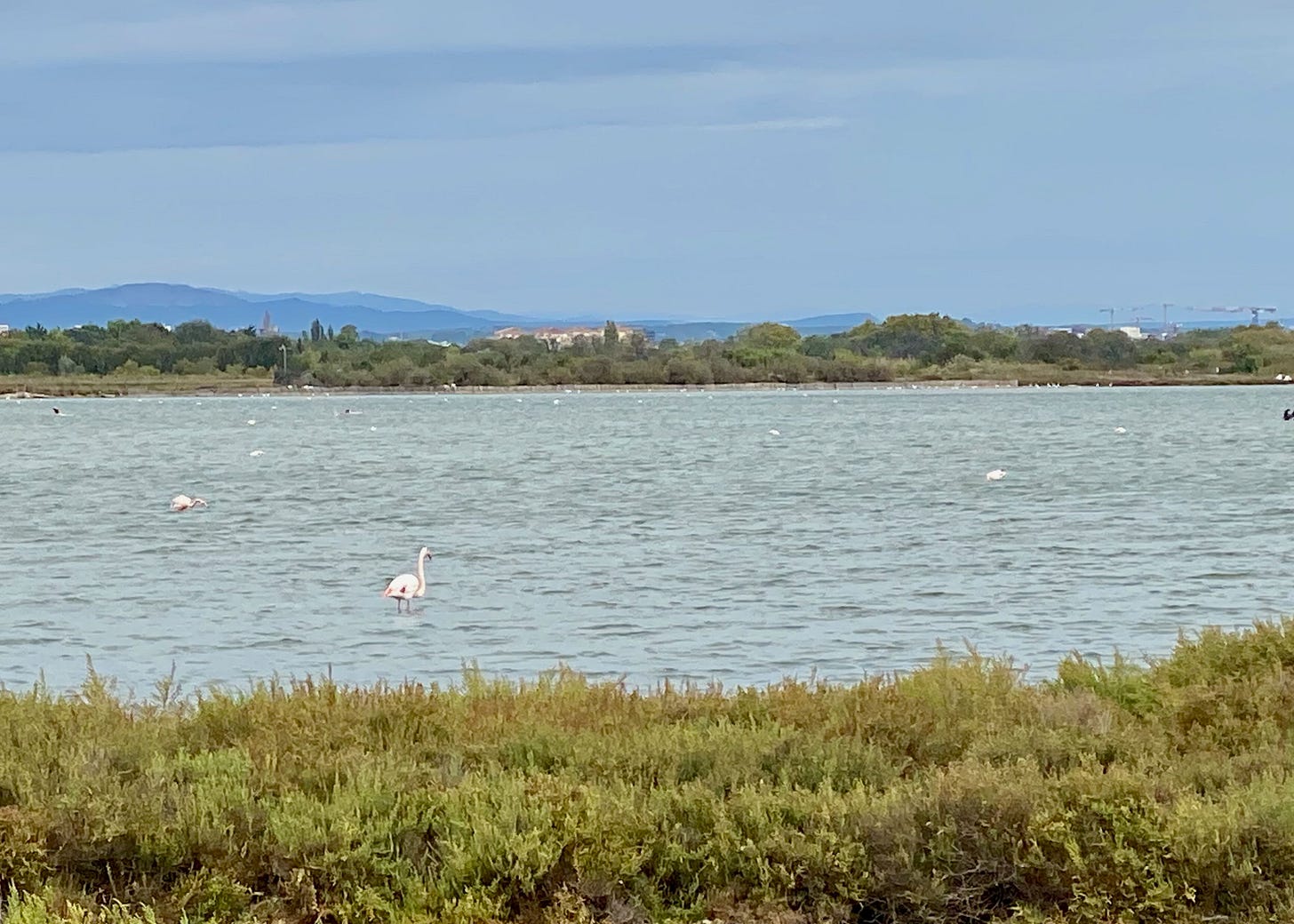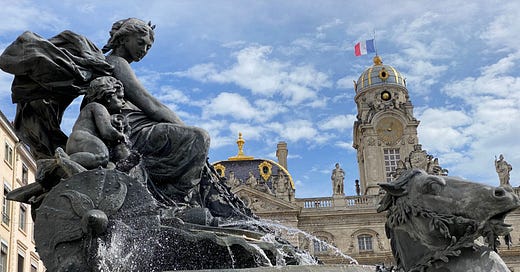I'd be Lyon if I said I was all Sète
Highlights of my travels in southern and central France, with a quick trip to Switzerland
I’m still in Toulouse, still planning my next travel steps. I’ll take advantage of the lull to share a photo or two of each of the places I’ve visited that I think is emblematic of the city, and a capsule review of my overall impression.
(First of three parts. Links to my original blog posts are in the titles. There may be more than one blog per city.)
Lyon

Located at the confluence of the Rhone and Saône rivers in mid-eastern France, Lyon is best known as the foodie capital of the very foodie France. It’s a beautiful city with a tonne of stunning architecture and thousands of restaurants that are crowded most nights of the week. Even the simple Irish pub where I ate lunch one day had the best veggie burger I’ve ever eaten, with a side order of exquisite French fries. Prepare to get fat, then work it off climbing the secret traboule tunnels on the steep hills of the Croix-Rousse district. And don’t miss the Musée des confluences, an example of what can happen when museum directors keep the public foremost in mind when selecting and designing exhibits.
Geneva
Home of a large number of international organizations, including the United Nations, Geneva is a semi-cosmopolitan city with a rich of mix languages. French is the most common, with English, Spanish, Italian and German virtually tied for second place. Due in part to the presence of so many NGOs, two-thirds of the population hold foreign passports. It’s ethnic mix is very caucasian and euro-centric, however. The city boasts a rich architectural heritage and is surrounded by rolling hills and fronts on one of Europe’s largest lakes. The train network is modern, frequent and runs, naturally, like a Swiss clock. I didn’t have a lot of time to explore here, unfortunately, so I apologize for the thin report.
Montpellier

My second-favourite city in France (so far), Montpellier is a charming and vibrant town thanks in part to a very large student population (40% of the population are under 30). I stayed in an Airbnb in the old walled section of the city, known as the l’Écusson, which is well-preserved museum of medieval architecture but very confusing to navigate, even when you keep Google maps handy. It’s close enough to the Mediterranean that you can reach the beaches with a 30-minute bike ride along the Rivière Lez to Palavas-les-Flots. Central Montpellier is quite walkable but is also well serviced by several tram lines, which are free to residents (as is all public transit). If you prefer smaller cities, this may be the place for you. There’s lots to do, but the city also has a laid-back vibe.

Sète
Known as “Venice of the Languedoc” because of its extensive canal network, Sète is a major port and fishing centre on the Mediterranean coast in southern France. Its future was ensured in 1681 with the completion of the Canal du Midi, which connected the port to Toulouse and, from there, all the way to Bordeaux on the Atlantic coast via the Canal Latérale de la Garonne. It was, in effect, the southern terminus of the trans-France water highway of the 17th and 18th century. These days it’s still a busy port town and a popular tourist destination because of the ecological attractions of its protected, biodiverse wetlands and extensive beaches. Ferries connect it as well to Corsica, Mallorca, Algeria and Morocco. In fact, this is where I landed on returning on a two-day ferry trip from Nador in northern Morocco.

That’s it for this instalment of Les Périples de Peter. I’ll be back in a few days with a look back at Strasbourg, Paris and Casablanca, Morocco. Thanks for retracing my steps with me.








